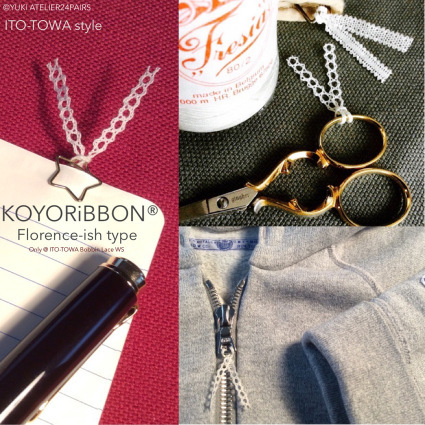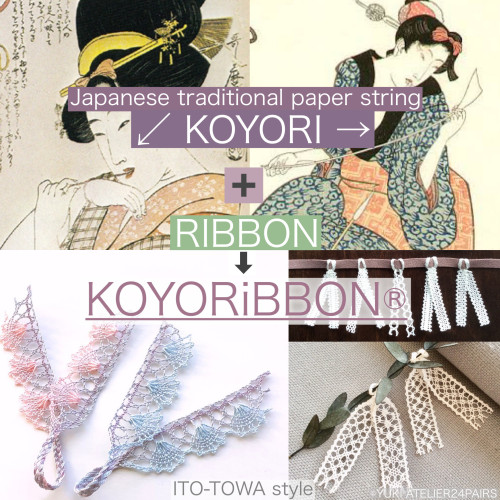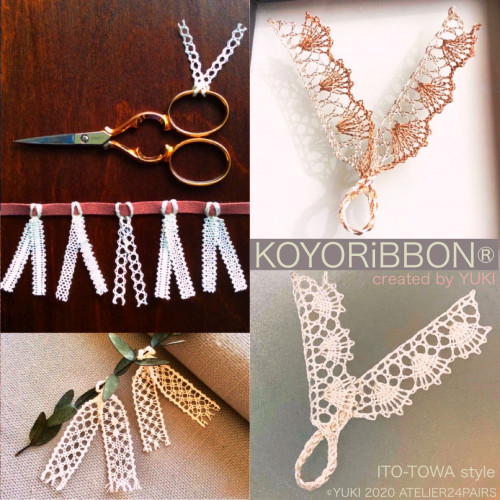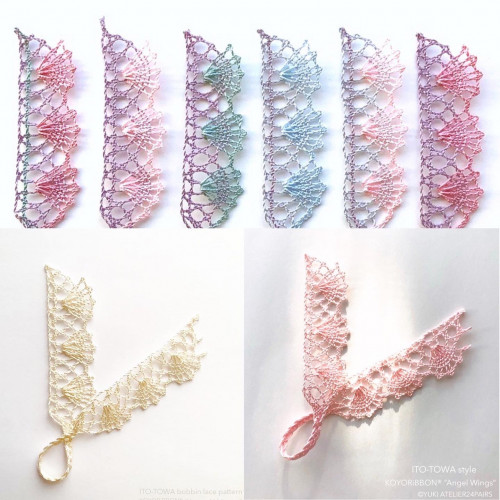About KOYORiBBON®︎
KOYORiBBON®︎ Collection ※日本語の記事は下の方で
To design bobbin laces in Koyoribbon style is one of my lifetime's works.
It's so nice if you design bobbin laces in Koyoribbon style and send me the photos of your Koyoribbon from Contact form, I'd like to post your pics with your name or nickname in this site.
Thank you.
YUKI
About KOYORiBBON
When you are learning bobbin lace, there are many opportunities to work small practice patterns. While it is fun to make and store them, the easiest way to use them is to tie them to something for decoration.
In that case, I wondered how long the part to be tied on would be, and when I measured it, I found that it would be about 5cm long just to tie it to myembroidery scissors.
The ‘Koyoribbon’ project introduced here is a design method that successfully reduces the time and effort required to attach the bobbin lace ribbon to something.
‘Koyoribbon’ is a generic term for a design in which the middle part of a bobbin lace ribbon is braided into a string-like shape, and is specially designed to be tied into a lark knot and used as decoration. First work one side of the lace then plait the threads together to form a string long enough to tie, and continue working the other side of the lace.
The name ‘Koyoribbon’ is named after ‘mimitsuki-koyori’ which is the ancient Japanese tool made by twisting long, thin strips of washi paper
The patterns for 8 pairs of bobbins evoked the form of mimitsuki-koyori, leading to the coined term "koyori + ribbon → Koyoribbon" (Koyoribbon istrademarked in Japan as KOYORiBBON® in commemoration of my 50thbirthday).
These simplest Koyoribbons were designed with the idea that people just starting out with bobbin lace might be happy to learn basic stitches not only by weaving them into bandage shapes, but also if they could make them into something they could use. These are also released in the video correspondence course of NIHON VOGUE Corp. *a Japanese publishing and educational business specializing in handicrafts. The file including texts and patterns is available for download as an option.
*course url https://crafting.jp/products/cf9586
In order to make the centre of the pattern into a plait, the transition between the wide lace part and the centre cord should be designed to be smooth and easy to handle, and in cases where there is an increase or decrease in pairs, the strength of the lace should also be ensured.
Some variations from my Koyoribbon patterns.

contact formからご連絡をいただけますでしょうか?




